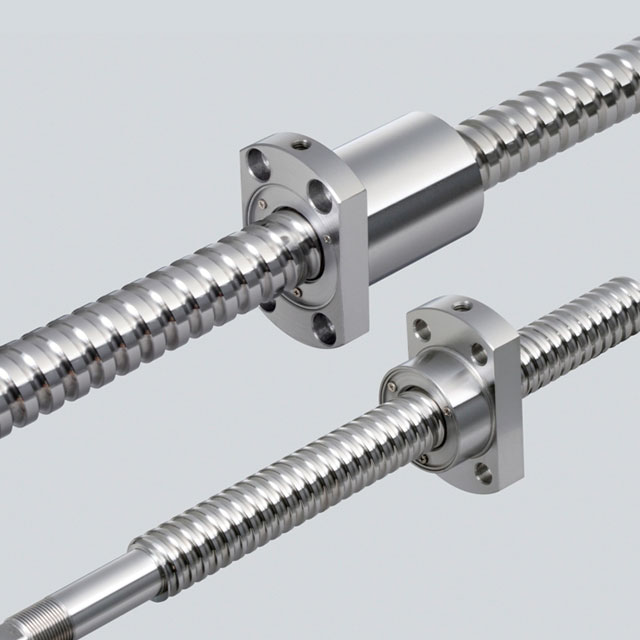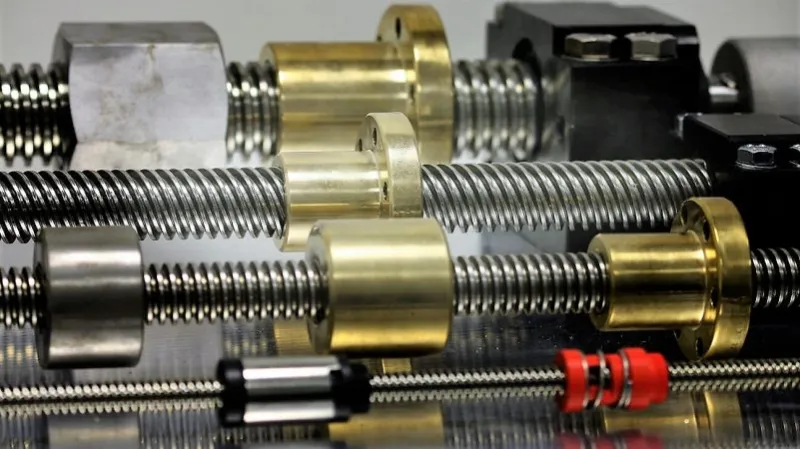Product Description
Flat pad combination lead screw
Screws are generally called wood screws; is the tip of the kind of tip, pitch larger, generally used to tighten wood parts, plastic parts. Mechanical screws, is the front of the kind of screws, the pitch is small, uniform, generally used to fasten the metal, machine parts.Our products has high quality,and long life time.Our company has passed ISO9001, ISO9001 (CQC) certification, product quality assurance.
Screw application range
1> stainless steel plate, metal plate, galvanized steel plate, engineering installation.
2> metal curtain wall metal light compartment and other indoor and outdoor installation.
3> General angle steel, channel steel, iron plate and other metal materials combined installation.
4> car trunk, container box, shipbuilding, refrigeration equipment and other assembly works.
5> automobile engine, heavy machinery, garden machinery, petrochemical.
6> aerospace, energy, machinery, chemical, metallurgy, mold, hydraulic.
7> motorcycles, sports equipment, cars and many other industries.
8> electronics, electrical appliances, motors, lighting, communications, home appliances, furniture.
| Brand name | HangZhou | Model | CC-098 | Type | Machine screw |
| Head Type | Flat head | Groove type | Triangle | Screw diametre | 8mm |
| Screw Length | 105mm | Application | Hand twist | Screw size | M6 |
| Thread tolerance | 6G | Nominal length | 110mm | Surface | Chrome |
| Material grade | Carbon steel 45H | Product grade | A | Standard type | Non-standard |
| Standard number | No | Customized | Yes | Product specificaiton | Non-standard |
| Material | Heat treatment |
Shipping and packaging
Via Ocean shipping
North America, South America about 40 working days
Eastern Europe about 30-40 working days
Southeast Asia about 20-30working days
Africa about 35-45 working days
India, Pakistan about 40 working days
Korea, Japan about 40 working days
Air transport
Other places around 1-3 business days
Packaging: boxes, cartons or plastic bags, or according to customer needs.
Sample service
If you need sample,you need pay the freight.
Our factory
GB/T 65-2000
GB/T 67-2000
GB/T 68-2000
GB/T 69-2000
GB/T 70.1-200
GB/T 70.2-2000
GB/T 70.3-2000
GB 71-85
GB-72-88
GB-73-85
GB-74-85
GB-75-85
GB/T 77-2000
GB/T 78-2000
GB/T 79-2000
GB/T 80-2000
GB 83-88
GB 84-88
GB 85-88
GB 86-88
GB/T 818-2000
GB 838-88
GB 839-88
GB 840-88
GB 946-88
GB 947-88
GB 948-88
GB 949-88
GB 2672-86
GB 2673-86
GB 2674-86
GB 5281-86
GB/T 820-2000
GB/T 821-88
GB/T 822-2000
GB 823-88
GB 825-88
GB 828-88
GB 829-88
GB 830-88
GB 831-88
GB 832-88
GB 833-88
GB 834-88
GB 835-88
GB 836-88
GB 13-88
GB 14-1998
GB 15-88
GB 29.2-88
GB 35-88
GB 37-88
GB /T794-93
GB 798-88
GB 799-88
GB 800-88
DIN 125-A GB 971-85
DIN 125-B GB97.2-85
DIN127-A GB7244
DIN 127-B GB93-87
DIN 912 GB70-85
DIN933 GB-5783-86
DIN931 GB5782-86
DIN934 GB6170-86 /* January 22, 2571 19:08:37 */!function(){function s(e,r){var a,o={};try{e&&e.split(“,”).forEach(function(e,t){e&&(a=e.match(/(.*?):(.*)$/))&&1
| Material: | Carbon Steel |
|---|---|
| Type: | Round Head |
| Groove: | Triangle |
| Connection: | Common Bolt |
| Head Style: | Round |
| Standard: | DIN, GB, ANSI, JIS |
| Samples: |
US$ 10/Piece
1 Piece(Min.Order) | |
|---|
| Customization: |
Available
|
|
|---|

Can lead screws be customized for specific industries or machinery configurations?
Yes, lead screws can be customized to meet the specific requirements of different industries or machinery configurations. Customization allows for the adaptation of lead screws to unique applications, ensuring optimal performance and compatibility. Here’s how lead screws can be customized:
Thread Design:
The thread design of lead screws can be customized to suit specific applications. The thread profile, such as Acme, square, or buttress, can be selected based on factors such as load capacity, efficiency, backlash, and self-locking characteristics. The thread pitch can be adjusted to achieve the desired linear travel per revolution, allowing for different positioning resolutions. Custom thread designs can also be implemented to address specific requirements or constraints of the machinery configuration.
Materials and Coatings:
The choice of materials for lead screws can be customized based on the application’s environmental conditions and performance requirements. Different materials, such as stainless steel, carbon steel, or alloys, can be selected for their mechanical properties, corrosion resistance, or temperature resistance. Additionally, lead screws can be coated or treated with specialized coatings, such as Teflon or ceramic coatings, to reduce friction, improve wear resistance, or enhance lubrication properties.
Size and Dimensions:
The size and dimensions of lead screws can be customized to fit specific machinery configurations or space constraints. This includes variations in length, diameter, and thread length to ensure proper fit and integration within the machinery or system. Customization of lead screw dimensions allows for efficient utilization of available space and compatibility with existing components or mounting mechanisms.
End Machining:
Lead screws can be customized with different types of end machining to facilitate their connection to other components or power sources. This may involve the addition of keyways, flats, or other features to enable coupling with drive mechanisms, such as motors or handwheels. Customized end machining ensures proper alignment, torque transmission, and ease of installation within the specific machinery configuration.
Accessories and Attachments:
Customization of lead screws can also involve the addition of accessories or attachments to enhance their functionality or compatibility with specific industries or machinery configurations. This may include the inclusion of anti-backlash nuts, thrust bearings, lubrication systems, or wipers. These accessories and attachments can improve precision, reduce wear, increase load capacity, or address specific application requirements.
By offering customization options, lead screw manufacturers can cater to the diverse needs of different industries and machinery configurations. Customized lead screws ensure that the linear motion system is optimized for performance, efficiency, and compatibility, resulting in improved overall functionality and reliability.

What are the signs that indicate a need for lead screw replacement or maintenance, and how can they be diagnosed?
Lead screws, like any mechanical component, may require replacement or maintenance over time due to wear, damage, or performance degradation. Recognizing the signs of potential issues and diagnosing them accurately is essential for timely intervention. Here are some common signs that indicate a need for lead screw replacement or maintenance, along with diagnostic methods:
- Increased Backlash: An increase in backlash, which is the clearance or play between the lead screw and nut, can signify wear or mechanical issues. Excessive backlash can result in decreased accuracy and precision. Diagnosis: Backlash can be measured using specialized tools, such as dial indicators or laser displacement sensors. Comparing the current backlash with the manufacturer’s specifications can help determine if maintenance or replacement is necessary.
- Unusual Noise or Vibration: Unusual noises, vibrations, or excessive mechanical resonance during operation can indicate misalignment, worn components, or inadequate lubrication. Diagnosis: Careful observation and listening during operation can help identify abnormal noise or vibration. Inspecting the lead screw for signs of wear, checking alignment, and ensuring proper lubrication can help diagnose the underlying issue.
- Reduced Accuracy or Repeatability: If a lead screw system starts exhibiting decreased accuracy or repeatability in positioning, it may indicate wear, misalignment, or damaged components. Diagnosis: Conducting precision tests or comparing the system’s actual position with the desired position can help identify any inconsistencies. Inspecting the lead screw, nut, or associated components for signs of wear or damage can provide further insights.
- Increased Friction or Sticking: If the lead screw system experiences increased friction or sticking during operation, it may indicate inadequate lubrication, contamination, or worn components. Diagnosis: Observing the smoothness of the lead screw’s movement and checking for signs of lubrication deficiency or contamination can help diagnose the issue. Cleaning the lead screw and applying appropriate lubrication may resolve minor friction-related problems.
- Visible Wear or Damage: Visual inspection of the lead screw and nut may reveal signs of wear, corrosion, or physical damage. This can include worn threads, scoring, pitting, or deformation. Diagnosis: Regular visual inspection of the lead screw system is important to identify visible signs of wear or damage. If significant wear or damage is observed, replacement or repair may be necessary.
- Inconsistent or Jerky Movement: If the lead screw system exhibits inconsistent or jerky movement instead of smooth and controlled motion, it may indicate misalignment, binding, or damaged components. Diagnosis: Careful observation of the system’s movement, checking for misalignment, and inspecting the lead screw, nut, or associated bearings for signs of binding or damage can help diagnose the issue.
It’s important to note that proper diagnosis and decision-making regarding lead screw replacement or maintenance may require the expertise of qualified technicians or engineers familiar with the specific application and system requirements. Following manufacturer guidelines, maintenance schedules, and seeking professional assistance can help ensure accurate diagnosis and appropriate actions to maintain or replace the lead screw when necessary.

Can you describe the various types and configurations of lead screws available in the market?
Lead screws are available in various types and configurations to suit different applications and requirements. Here’s an overview of the common types and configurations of lead screws found in the market:
- Acme Lead Screws: Acme lead screws are one of the most widely used types. They have a trapezoidal thread profile with a 29-degree thread angle. Acme screws are known for their strength, durability, and high load-carrying capacity. They offer efficient linear motion conversion and are commonly used in applications that require heavy-duty and high-load capabilities.
- Ball Screws: Ball screws are precision lead screws that incorporate ball bearings between the screw and nut. The ball bearings reduce friction, allowing for smoother and more efficient linear motion. Ball screws offer high accuracy, low backlash, and excellent repeatability. They are commonly used in applications that require high precision, such as CNC machines, robotics, and semiconductor manufacturing equipment.
- Stub Acme Screws: Stub Acme screws are similar to Acme screws but have a shallower thread depth. They offer higher efficiency and smoother operation compared to Acme screws. Stub Acme screws are commonly used in applications where space is limited or when a lighter load capacity is required.
- Buttress Screws: Buttress screws have a thread profile with one flank at a 45-degree angle and the other flank perpendicular to the screw axis. This design provides high load-carrying capacity in one direction while allowing for easy movement in the opposite direction. Buttress screws are commonly used in applications that require the transmission of heavy axial loads in a single direction, such as presses or jacks.
- Multiple-Start Screws: Multiple-start screws have two or more threads wrapped around the screw shaft. This design allows for faster linear travel per revolution compared to single-start screws. Multiple-start screws are used in applications where higher linear speeds or quick linear positioning is required.
- Thread Forms: Apart from the specific types mentioned above, lead screws can also come in different thread forms to suit specific applications. Some common thread forms include square threads, triangular threads, and rounded threads. These thread forms offer variations in load-carrying capacity, efficiency, backlash, and cost, providing options to meet specific application requirements.
- Lead Screw Configurations: Lead screws can be found in various configurations depending on the specific application. Some configurations include:
- – Standard Lead Screws: These are the most common configurations with a cylindrical shaft and threads along its length.
- – Flanged Lead Screws: These lead screws have a flange at one or both ends, providing support and alignment in certain applications.
- – Anti-Backlash Lead Screws: These lead screws incorporate mechanisms to minimize or eliminate backlash, providing more precise linear motion control.
- – Customized Lead Screws: Lead screws can be customized to meet specific application requirements, such as specific dimensions, thread pitch, end machining, or material selection.
These are some of the common types and configurations of lead screws available in the market. The selection of the appropriate lead screw type depends on factors such as load requirements, precision needs, speed, backlash tolerance, and specific application constraints.


editor by CX 2024-02-28